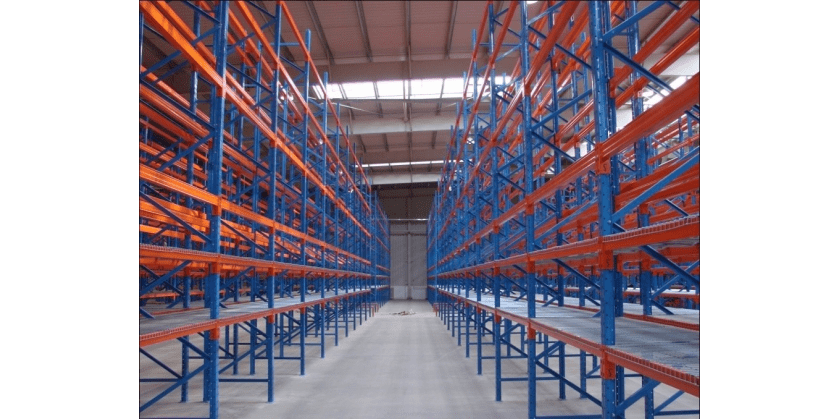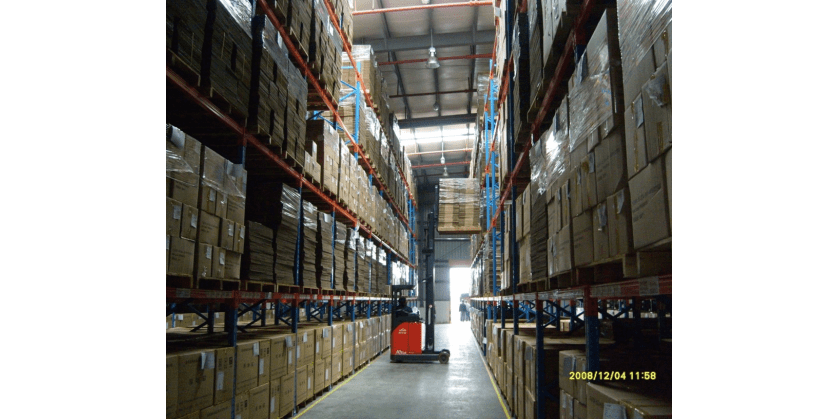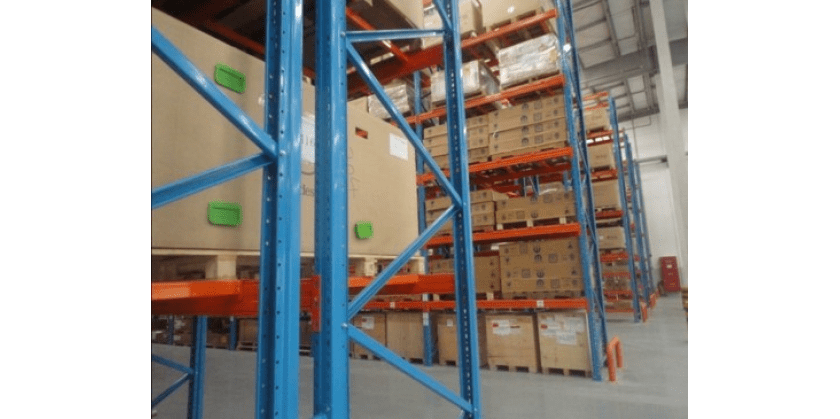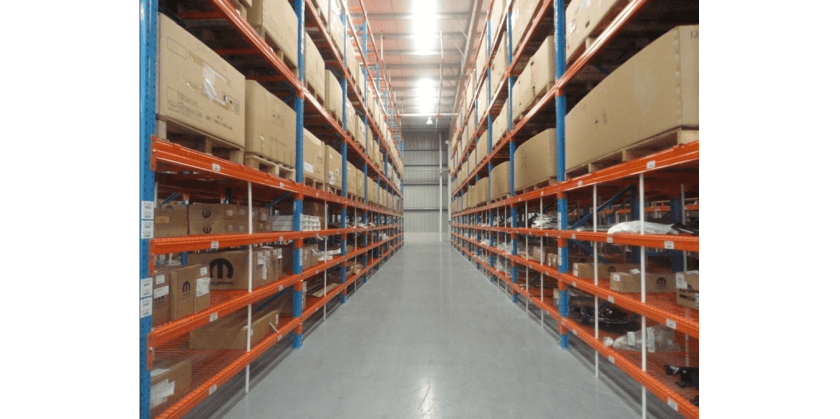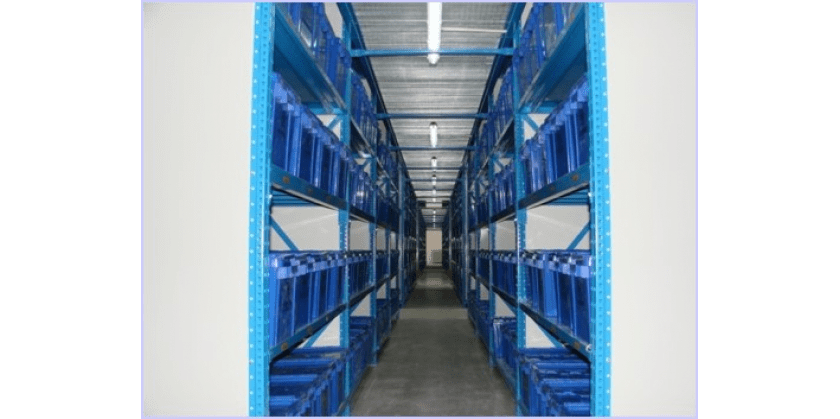Heavy Duty Shelving
Each layer is over 500 kg, easy to disassemble and install, shockproof, durable, hook type design, can freely adjust the storage height;
Suitable for use in factory, warehouse and production line.
Each tray can be stored and stored separately, the cost of investment is the most economical, but there are wide access, low storage density, floor area utilization rate and space utilization rate are only 35% and 25% respectively.
Advantages: the tray can be accessed independently/the beam can be adjusted easily, the height of each floor can be adjusted flexibly/it can be used with most moving equipment
Low requirements for floor flatness/various accessories can meet various loading types/average storage utilization rate can reach almost 100%
Good for the turnover rate.
Heavy Pallet Racking (Conventional Pallet Racking): Most of the types of shelves are stored on the pallet with pallets.
"A" Heavy-duty rack: general storage / standard configuration, galvanized wire mesh, wood plank, galvanized steel
Heavy shelves: general storage / pallet shelves
The market popular saying: material rack, material rack, shelf, heavy rack, storage rack.
Beam-type heavy shelves are generally stored in pallets, which is suitable for various warehouses and is the most widely used shelf form. The requirements for material handling equipment are low, and the cost of shelves is the cheapest.
It can be laid according to the use needs of various industries: span beams, galvanized mesh panels, wooden boards, galvanized steel sheets, bulk cargo storage and picking, and pallet storage.
It adopts convenient stack board access mode, effectively cooperates with stacker loading and unloading, and greatly improves work efficiency.
Public road proportion of heavy material rack stacker: road area is over 60%.
"B" Heavy Frame: High Load Storage / Three-post, Four-post
Heavy frame: high load storage
Shelf planning with the same properties as general beam-type racks (heavy-duty racks) is mainly to strengthen the safety structure and load design specially designed for special high load requirements.
Its general access advantages are the same as for heavy-duty racks.
The combined structural design is easy to assemble and disassemble, has good migration and the load beam can simply adjust the distance according to the height of the cargo, and is designed with safety latches to prevent the load beam from detaching.
"C" Heavy Rack: Third Party Logistics Warehouse / Cold Chain, Medicine, Boutique Warehouse, Fast Moving Consumer Goods, E-commerce Warehouse
Heavy shelves: third-party logistics / high warehouse shelves
Picking, tally, shelving racks, high storage racks (above 10 meters), anti-collision column covers / guardrails, signs / marking lines, fire equipment / safety maintenance and management.
Clear storage location and area division can simplify management and shorten pallet stay time, and is suitable for various pallet sizes and loads.
Applicable stacker models: vertical stacker, sitting stacker
Applicable industries: manufacturing logistics, third-party logistics, e-commerce logistics, pharmaceutical logistics, boutique logistics, suitable for a variety of items, large quantities of goods storage.
《D》 Heavy-duty rack: Multi-plate storage / double-deep, drive-in, push-back, heavy-duty electric mobile shelves
Heavy-duty rack: Multi-board storage solution
Double board deep shelf:
A type of shelf that doubles the depth of a general beam-type shelf (heavy-duty shelf) and reduces the area of the stacker's walking path. It needs to be used with a scissors forklift.
Alternative solution: dual-plate pushback / horizontal pushback shelves
The trolley is used to bear the goods pushed back and stored on the guide rail, and the rear goods slide forward by the spring of the guide rail, which can be done by using a general stacker. The compact storage method eliminates redundant aisles, and the storage capacity is 50% higher than that of traditional beam-type heavy shelves.
Drive-in shelves:
For storage of small items and large batches of goods, the stacker can directly enter the shelves for operation. After the goods are advanced out, the warehouse space utilization rate is 逹 80%.
Slope push-back shelves:
The utilization rate of storage space is similar to that of drive-in shelves, but the stacker does not need to be driven the shelf area to pick up the goods, which greatly improves the work efficiency, but the depth of the storage space is relatively small.
Heavy-duty electric mobile shelves:
One of the dense storage racking systems, with high storage capacity, has active and passive protection measures, and has a certain seismic performance, very high security, and quick access to the channel.
Land resources are becoming increasingly scarce, and the optimization of warehouse space, storage density and storage costs are receiving more and more attention. Want to make full use of the storage space of the warehouse, then mobile shelves are undoubtedly the most effective solution.
Most companies have a design load of about 500kg ~ 1,200kg per plate, and a design load of about 1,000kg ~ 2,400kg per floor. The maximum design load of each company can reach 5,000kg. It is the most commonly used one. The design concept is to three-dimensionalize the storage space to reduce the land cost of the storage unit; and to consider the characteristics of the first-in-first-out goods to achieve high-efficiency operation goals. Clear shelf storage and district planning points simplify management and shorten pallet stay time, and are suitable for various pallet sizes and loads.
